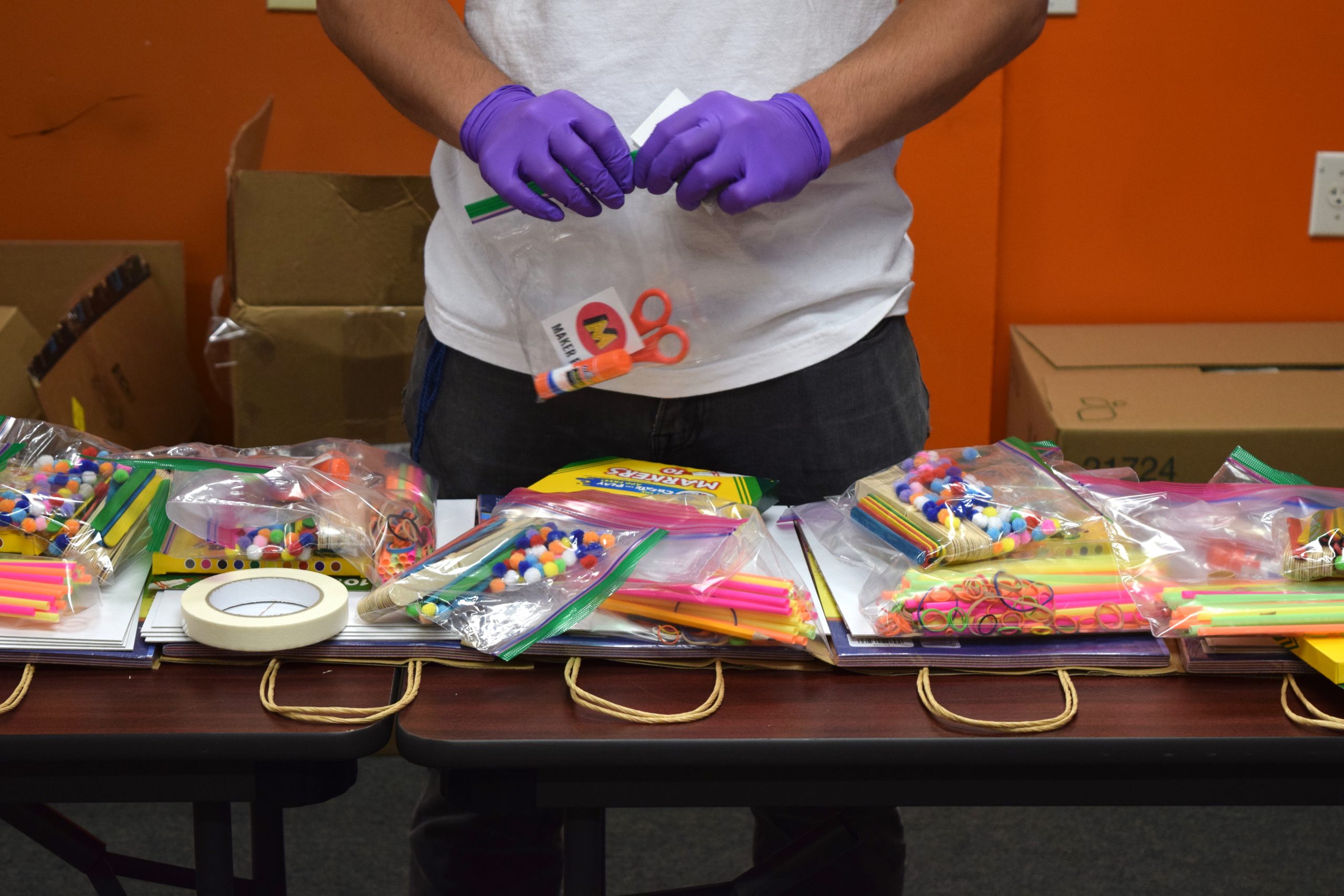This is the fifth in a series of blog posts focused on how hands-on learning can be made accessible at home. To date, kits have been distributed to 750 families in Oakland through Oakland Unified School District’s “Grab and Go” food distribution sites, drive-through graduations, and delivered to families’ homes. This work would not have been possible without the collaboration and partnership of educators at EBAYC, Bay Area Community Resources, and Safe Passages.
 In response to the spread of COVID-19, schools and other learning environments across the country are grappling not only with new terrains of remote learning but also with persistent issues of access and equity faced by their learners. As school buildings close and classes move online, we can’t take for granted that our learners have adequate or consistent access to staple hands-on materials, let alone to the internet or a computer. Home Make Kits, which assemble an array of constructive materials and self-paced project guides, ensure that all learners, especially those most in need, can have meaningful, hands-on learning experiences at home.
In response to the spread of COVID-19, schools and other learning environments across the country are grappling not only with new terrains of remote learning but also with persistent issues of access and equity faced by their learners. As school buildings close and classes move online, we can’t take for granted that our learners have adequate or consistent access to staple hands-on materials, let alone to the internet or a computer. Home Make Kits, which assemble an array of constructive materials and self-paced project guides, ensure that all learners, especially those most in need, can have meaningful, hands-on learning experiences at home.
That’s why we’re publishing How to Assemble and Distribute Home Make Kits, a project guide that breaks down all you need to know — from what kinds of materials to include, to what projects and activities they can support — to make home make kits a reality for your community of learners. Maker Ed collaborated with UC Davis’ Beta Lab to standardize the materials and supplies list included in this guide.
